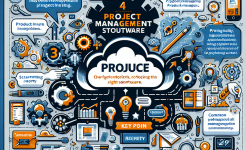Understanding User Stories
User Stories are short, simple descriptions of a feature or functionality from the perspective of the user. They are a key component of Scrum Agile Development as they help to ensure that the development team is focused on delivering value to the end user. A well-written User Story should be clear, concise, and understandable by all stakeholders.
The primary purpose of a User Story is to communicate the requirements of the user to the development team. It should describe what the user wants to achieve, rather than how it should be achieved. This allows the development team to have the flexibility to find the best solution to meet the user's needs.
User Stories are typically written in a simple format: "As a [user type], I want to [action], so that [benefit]." This format helps to ensure that the User Story is focused on the user and the value they will receive.
Characteristics of a Good User Story
A good User Story possesses several key characteristics. Firstly, it is clear and unambiguous. The requirements should be easily understandable by both the development team and the stakeholders. Ambiguity can lead to misunderstandings and delays in the development process.
Secondly, a good User Story is valuable to the user. It should address a real need or problem that the user has, and the benefit of the story should be evident. If the User Story does not provide value to the user, it is unlikely to be a priority for the development team.
Finally, a good User Story is estimable. The development team should be able to estimate the effort required to implement the story. This allows for better planning and scheduling of the project. Without a clear estimate, it is difficult to manage the project effectively.
Writing User Stories
When writing User Stories, it is important to start with the user in mind. Understand the user's needs, goals, and pain points. This will help to ensure that the User Stories are relevant and valuable.
Begin by identifying the user type. Who is the user of the feature or functionality? Once the user type is identified, describe the action that the user wants to perform. What is the user trying to achieve? Finally, explain the benefit that the user will receive from performing the action. Why is this action important to the user?
It is also important to keep the User Stories at a high level. Avoid getting into too much detail at this stage. The details can be fleshed out during the Sprint Planning and Development phases.

Splitting User Stories
Sometimes, a User Story may be too large or complex to be implemented in a single Sprint. In these cases, it is necessary to split the User Story into smaller, more manageable pieces. This helps to ensure that the development team can make progress on the project in a timely manner.
There are several techniques for splitting User Stories. One approach is to split the story based on functionality. For example, if the User Story is to "Build a shopping cart system," it could be split into "Add items to the shopping cart," "Remove items from the shopping cart," and "Calculate the total price of the items in the shopping cart."
Another technique is to split the story based on user roles. If the User Story is for multiple user roles, it could be split into separate stories for each role. For example, if the User Story is for "Customers and Admins to manage orders," it could be split into "Customers to place orders" and "Admins to process orders."
Prioritizing User Stories
Prioritizing User Stories is an important part of the Scrum Agile Development process. It helps to ensure that the development team is working on the most valuable and critical features first.
To prioritize User Stories, consider the business value, the risk, and the effort required. User Stories that have a high business value and a low risk should be given a higher priority. Similarly, User Stories that require a relatively small amount of effort should also be prioritized.
It is also important to involve the stakeholders in the prioritization process. They can provide valuable insights into the business needs and priorities. By involving the stakeholders, you can ensure that the prioritization is based on a comprehensive understanding of the project requirements.
Acceptance Criteria for User Stories
Acceptance Criteria are the conditions that a User Story must meet in order to be considered complete. They provide a clear and objective way to determine whether the development team has successfully implemented the User Story.
Acceptance Criteria should be specific, measurable, achievable, relevant, and time-bound (SMART). They should describe what the user expects the feature or functionality to do, and how it should perform. For example, if the User Story is "As a customer, I want to be able to place an order," the Acceptance Criteria could include "The order form should be easy to fill out," "The order should be submitted successfully," and "The customer should receive a confirmation email."
Defining clear Acceptance Criteria helps to ensure that the development team and the stakeholders have a shared understanding of what constitutes a successful User Story. It also helps to reduce the risk of misunderstandings and rework.
Conclusion
Writing effective User Stories is an essential part of Scrum Agile Development. By understanding the purpose and characteristics of User Stories, and following the guidelines for writing, splitting, prioritizing, and defining acceptance criteria, you can ensure that the development team is focused on delivering value to the end user. Remember, User Stories are not just a means of communicating requirements, but a tool for driving the success of the project. With a well-written set of User Stories, the development team can work more efficiently, and the project is more likely to meet the needs and expectations of the users.
ARTICLE TITLE :User Story Writing Guide in Scrum Agile Development ,AUTHOR :ITpmlib

















